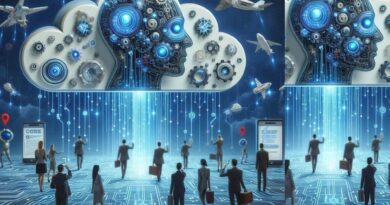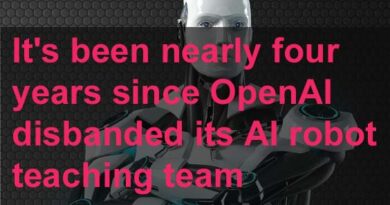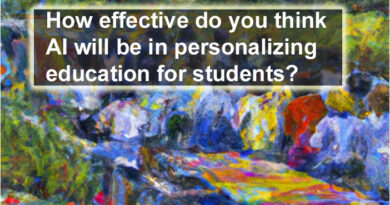Artificial intelligence and generative AI may be the most important technology of any lifetime
Artificial Intelligence and Generative AI: The Single Most Important Technology of Any Lifetime
The world is fast changing and moving forward in terms of technology, and one of the greatest breakthroughs is Artificial Intelligence . Artificial intelligence means a machine’s capacity to execute those tasks that would otherwise call for human intellect including learning and problem solving. Nevertheless, with the development of new generations of Artificial intelligence, a new type of technology has appeared . This technology goes beyond what is considered as Artificial intelligence; perhaps one of the most important technologies of any generation.
Introducing the Power of Artificial Intelligence
Artificial Intelligence is not a new phenomenon as it has been in existence for several decades now but however its usage has not been very rampant…. It is present in our everyday activities, from the voice assistants on our portable devices to the underlying data processing in social networks. Artificial intelligence is a reality that has become a part of our lives in almost every sphere, and it can only expand in the future.
One of the biggest strengths of Artificial intelligence is the capability of handling a massive amount of data within a very short period. This in turn enables machines in making precise and faster decisions, thus less chance of error occurrence and high productivity. Artificial intelligence equally holds the potential to save time and reduce the need for manpower to perform monotonous tasks.
The Emergence of Generative Artificial intelligence
Generative Artificial intelligence extends Artificial intelligence even further as machines are given the capability to generate new content on their own. This piece of technology applies deep learning by looking at large sets of data and generating new content based on this data. It has been used to produce music, painting, and even narratives which has made it difficult to differentiate between art crafted and art crafted by a human being.
There are virtually no fields that have not been impacted by generative Artificial intelligence, but one of the most outstanding areas is design. With the help of this technology, designers can create as many variants of a design as they wish and spend less time on it but at the same time produce more and different variations. This inevitably opens up a vast territory for designers, providing them with incredible opportunities to experiment.
Impact of AI on different sector
This is to mean that Generative Artificial intelligence and other Artificial Intelligence have the potential to revolutionize more than just the financial industry. It also holds potential to revolutionize many sectors of the economy, such as the healthcare, finance, manufacture, etc. The applications of the Artificial intelligence in the healthcare industry: the ability to analyze the data related to patients and assist in making the right diagnosis and prescribe the proper treatment. In finance, Artificial intelligence potentials are in fraud detection solutions, risk evaluation and portfolio management.
In industry 4.0 context, Artificial intelligence and Generative Artificial intelligence can be employed in the manufacturing sector for the management of production lines, prediction of necessary maintenance, and enhancement of product quality, respectively. The opportunities are numerous and given that the technology is young, it continues to advance, thus expanding its effects towards different fields.
The Future of Artificial intelligence
By evaluating the Artificial intelligence, particularly, Generative Artificial intelligence, societies have found that this technology will be instrumental in determining the future. The results will only be enhanced with advanced artificial intelligence and thus it will make a machine a part of the daily life. The prospects of AI for various industries can only be characterized as quite vast and the potential of this technology will continue to unfold in the distant future.
AI is also one of the most promising tools for addressing some of the global challenges we face because is more than just an amazing technology. It may also be helpful in analyzing data and coming up with potential patterns that can aid in solving challenges like climate change, world poverty, and diseases among others.
In conclusion, Artificial Intelligence, and Generative Artificial intelligence, are arguably some of the biggest technologies of any lifetime. This places them ahead of other solutions since their capabilities to revolutionize industries, optimize processes, and address challenges cannot be rivaled. Thus, it’s important to accept and integrate Artificial intelligence to benefit from this advancement in technology rather than block it. The possibilities are endless and when we have as a guide, the future is looking even brighter.
What are the key differences of generative AI?
I consider artificial intelligence to be one of the most crucial technologies from the contemporary world, changing the world as we know it. In terms of branching, there exists one more type of Artificial intelligence that deserves attention – generative Artificial intelligence. While Artificial intelligence that has been discussed thus far is all about finding solutions to certain problems or accomplishing certain tasks, generative Artificial intelligence is about creating something new. However, in this article, we will focus on learning more about the world of generative Artificial intelligence and some of its key benefits and applications.
How Generative AI Works
Generative AI, also referred to as creative Artificial intelligence, is an Artificial intelligence technology type characterized by utilizing machine learning algorithms to generate new outputs such as content or images. Deep learning works in the way that it constantly receives input data which it then processes in order to design an original solution.
The mechanism of generative AI starts with data accumulation where you collect a dataset of content. This can be an image, text, audio and any other form of data that may be in the dataset. The final step is for the machine learning algorithm to train through the data set, discover relationships/associations between the various factors.
After this training is complete the algorithm can then begin creating new content using items from the dataset in a mixed and mangled form. This is almost analogous to how the human brain forms new concepts out of existent knowledge through reverse synthesis. Nevertheless, generative Artificial intelligence can accomplish this at a stupefying rate and capacity, cranking out tens of thousands of different outcomes all at once.
Types of Generative AI
Each type of generative AI differs in functionality and tasks it can perform, ranging from creating content to recognizing patterns. undefined
Text generation: This form of artificial artificial intelligence is for the production of new written material, for example, articles, stories or even scripts in code.
Image generation: While generative Artificial intelligence is not able to independently identify objects in an image, it is capable of using deep learning algorithms to create completely new images that are extremely realistic.
Music generation: However, with Artificial intelligence enabled generative music we are able to develop new unique melodies based on existing pieces and new algorithms.
Video generation: This type of generative Artificial intelligence involves using training data to generate new videos such as an animated video or a visualization.
Real-life examples of Generative Artificial intelligence
There are many uses of this generative Artificial intelligence and as seen above it can be applied in almost any field (industry).
Content creation: Presently, the majority of media firms and content providers are already applying generative AI in writing articles, producing videos, and creating other forms of content at a much faster rate than human production.
Design and creativity: In creative fields such as fashion design or interior designing, it becomes feasible to come up with new designs or concepts using generative Artificial intelligence.
Drug discovery: Companies creating drugs use for creating new molecules of medicine, so these solutions can contribute to shortening the search for remedies for diseases.
Game development: There are actual cases of game developers using generative Artificial intelligence to create new levels, characters or even games themselves.




